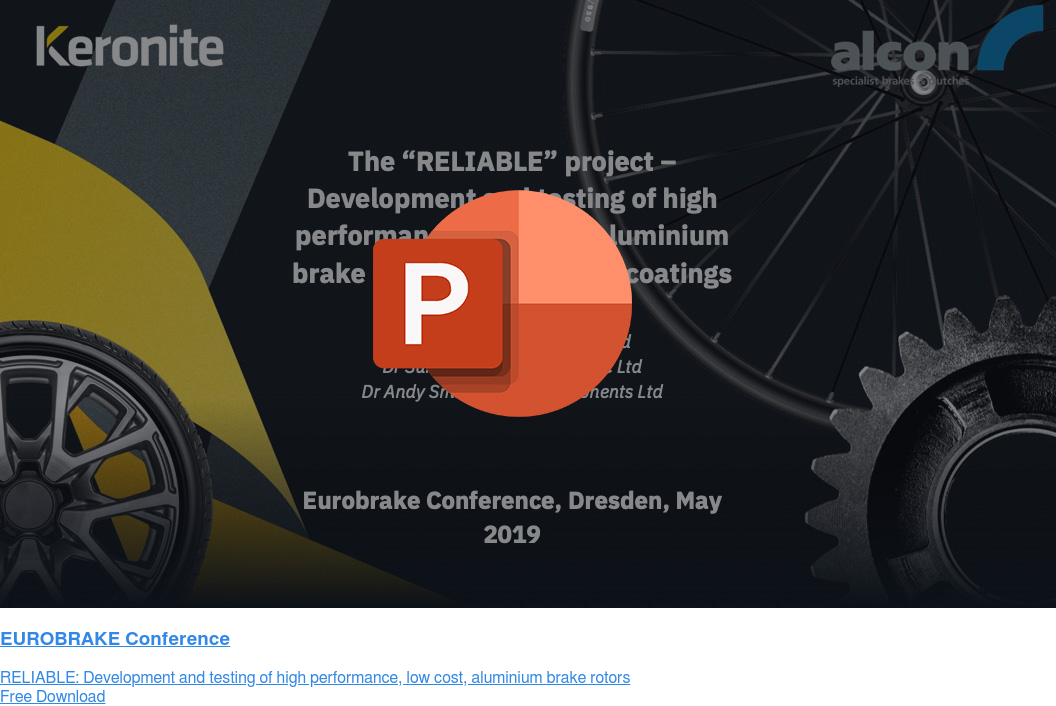Can surface technologies improve vehicle road safety in extreme weather?
18 October 2021Car safety has improved significantly over recent decades. Intelligent Vehicle Safety Systems (IVSS) such as anti-lock braking systems (ABS), air bags and improved seat belt safety are designed to mitigate the damage caused by accidents. But we can also reduce risk by looking at the root cause of road traffic accidents. Current research shows that poor visibility and hazardous road conditions caused by adverse weather conditions are key contributors to road traffic accidents.
Reducing risk on the roads
Car accidents are the result of several factors which interact together in a complex way, including technical, environmental, and behavioural influences. Legislation and speed control measures have improved driver safety over recent years. Accidents caused by driver impairment are in decline, with a dramatic reduction in drink-driving and distractions, such as using mobile phones. There is also evidence to show that reducing speed and increasing driver awareness of accident hotspots has reduced the number of road traffic
accidents. Unfortunately, we cannot legislate for or control extreme weather.
Extreme weather is a term used to cover a range of eventualities, from heat waves to sudden bouts of freezing temperatures through to tropical storms. When we consider the effects of extreme weather on driver safety, the most hazardous conditions are snow, ice, rain, and fog.
Winter road conditions considerably increase the risk to drivers and passengers of road vehicles. According to recent studies by the European Road Safety Observatory, 39 to 60% (depending on country) of accidents occur in adverse weather conditions.
They also found the risk of an accident on a slippery road is up to nine times higher than on dry road surfaces. The USDOT Federal Highway Administration found that 22% of crashes across the US are related to adverse weather.
Vehicle braking distance is increased by wet, snowy, or icy conditions on the road. These weather conditions reduce the friction coefficient or traction between the tyres and the road. An icy road can have a friction coefficient as low as 0.04, compared to a dry road surface which would typically have a friction coefficient of 0.7 to1.0. This reduced friction coefficient on wet or icy roads is difficult to control in a real-world scenario, so we can look to technology to help reduce the risk.
A secondary effect of adverse weather conditions is corrosion. With the cast iron disc braking system of most modern cars., the disc is highly susceptible to corrosion. Additional factors such as rock salt and de-icers accelerate the corrosion of brake discs. Over time, this will negatively affect the braking performance of the vehicle.
Using technology to improve safety
Modern passenger vehicles use on-board advanced driver-assistance systems (ADAS). These can be passive, where the driver is alerted to a possible dangerous situation, or active, where the vehicle itself acts without the driver’s intervention. ADASs are becoming increasingly intelligent as technology improves and they have the potential to dramatically improve vehicle safety.
Many ADASs include electronic stability control (ESC). This is a system designed to detect and minimise the risk of the vehicle skidding out of control because of reduced traction on wet or icy surfaces. Speed sensors on each wheel and individual control of wheel brakes help to prevent under or over-steering. This prevents the driver losing control of the vehicle and has (combined with ABS braking systems) significantly reduced the number of fatalities from road traffic accidents. The EU made ESC systems mandatory for all new
cars in 2014.
Other ADAS technologies such as Night Vision Systems (NVS) could help drivers in adverse weather when visibility is poor. They use a thermographic camera to visualise up to 250m of the road ahead, even in rain or snow. These systems are offered as an optional extra on a number of premium vehicles and have the potential to dramatically improve driver safety in adverse weather. Features such as adaptive cruise control (ACC) or intelligent speed adaptation (ISA) can also improve driver safety.
Improving braking systems
In addition to these ADAS technologies, we can look to improve braking performance of passenger vehicles as defective brakes remain the leading cause of road accidents in the UK, only exacerbated by extreme weather conditions. Automotive engineers and designers can improve car safety by reducing the weight of the vehicle and considering its braking dynamics. Improving friction coefficients between the brake discs and pads will give a reduced braking distance and allow the brakes to be more responsive.
Reducing the weight of the vehicle will reduce stopping distance and give the driver more control in hazardous situations such as skidding and hydroplaning. One possible solution to this would be to replace cast iron brake discs with aluminium brake discs. This could reduce the weight of the vehicle by up to 1.4% (based on a small car replacing all four brake discs), which would also reduce emissions and improve fuel economy.
Aluminium alloys are traditionally susceptible to wear. A PEO coating can dramatically improve wear resistance and increase the friction coefficient between the brake pad and discs. The outer surface of the PEO coating can be tailored to improve wear resistance, braking performance and corrosion resistance.
Keronite has been working with brake manufacturer Alcon to develop a PEO coating for aluminium brake discs. The project has shown promising results and could potentially provide a viable alternative to cast iron brake discs, reducing vehicle weight and improving braking performance. These products have the potential to be manufactured on a large scale and could meet production budgets.

 Keronite is now part of the CWST engineered coatings business.
Keronite is now part of the CWST engineered coatings business.